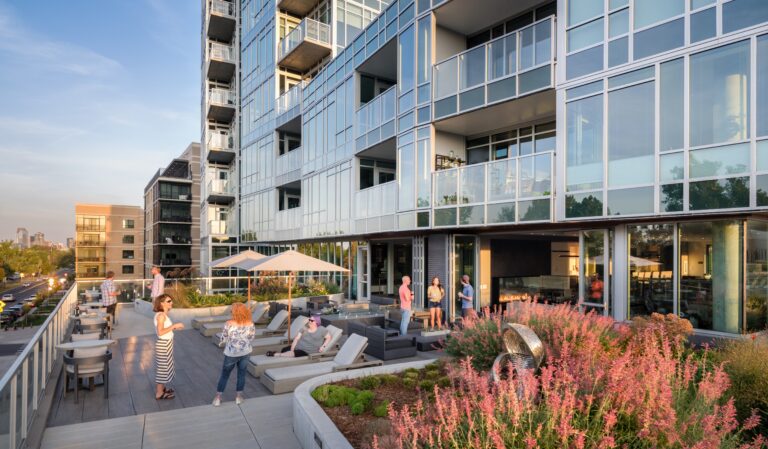Americans spend around 90% of their time indoors—a jarring statistic that underscores the critical importance of placing health and well-being at the forefront of building design.
To better understand how design can influence healthy lifestyles, researchers from the Institute for the Built Environment (IBE) at Colorado State University in partnership with NAVA Real Estate Development (NAVA), completed a three-year study on Denver’s Lakehouse Residences, the first residential project in Colorado to achieve WELL Certification at the Gold level.
Lakehouse is a 12-story, 196-unit community, located minutes west of downtown Denver in the Sloan’s Lake neighborhood and uniquely designed to promote the health and well-being of its residents. In addition to being the first of its kind in Colorado, Lakehouse is one of the first residential developments in the world to earn WELL Gold Certificationfrom the International WELL Building Institute (IWBI). The IWBI’s WELL Building Standard™is a globally recognized program that integrates human health and wellness best practices into the design, construction, maintenance and operations of the built environment to optimize the resident experience.
The study is among the most comprehensive research projects of its kind to date — here are some key findings:
- 80% of respondents noted that the building’s design enhanced their connection to nature
- Meditation gardens, biophilic design elements, and a predominantly glass exterior are a few ways resident’s connection to nature was magnified
- The findings support the hypotheses that residents’ satisfaction, health, wellbeing, and happiness would be significantly better after moving into Lakehouse than in prior residences.
- 87% of residents reported access to world-class fitness amenities was very or extremely impactful in helping lead a healthier lifestyle
- Positive changes in diet and exercise were achieved through the building’s organic urban farm, nutrition-related classes, and access to dietary experts
- On average, residents considered 10 more neighbors to be acquaintances and 2 more neighbors to be friends, compared to their experience before living at Lakehouse
- Fostering stronger social connections were achieved through the design of extensive communal spaces, a farm-to-table shared kitchen, and group cooking classes, among other elements.
“At NAVA, we not only believe but can now demonstrate the importance of placing human health and well-being at the forefront of building design,” said Brian Levitt, president and co-founder of NAVA Real Estate Development. “With these critical findings, we hope to be the model for residential projects everywhere with regard to the social and economic benefits of prioritizing human and environmental health in our built environment.”
CLICK HERE to download the full report.









